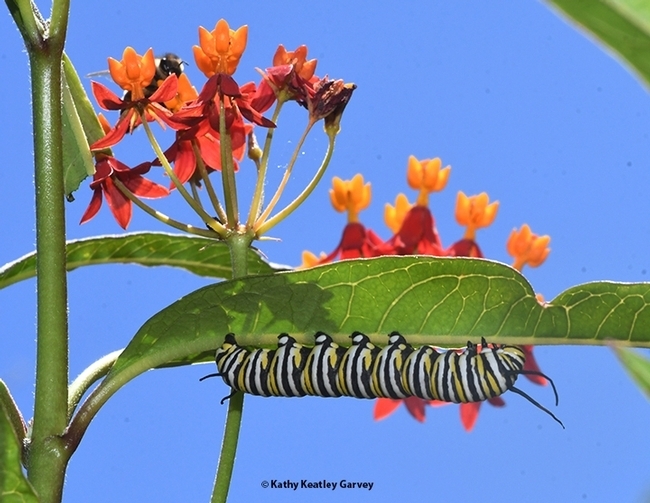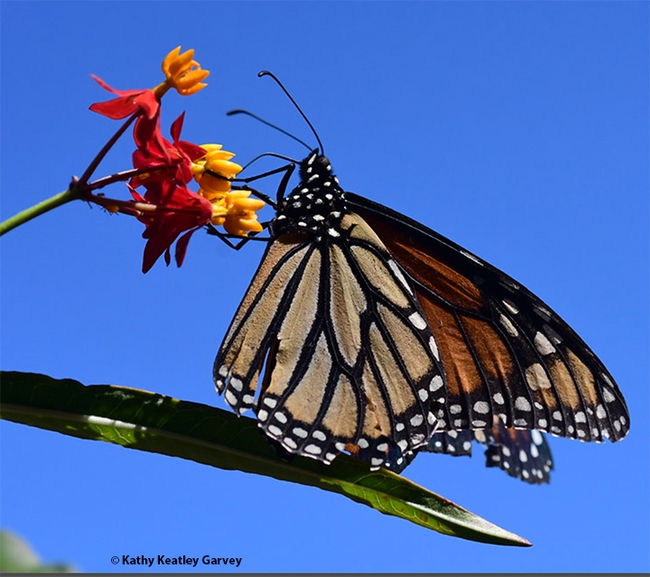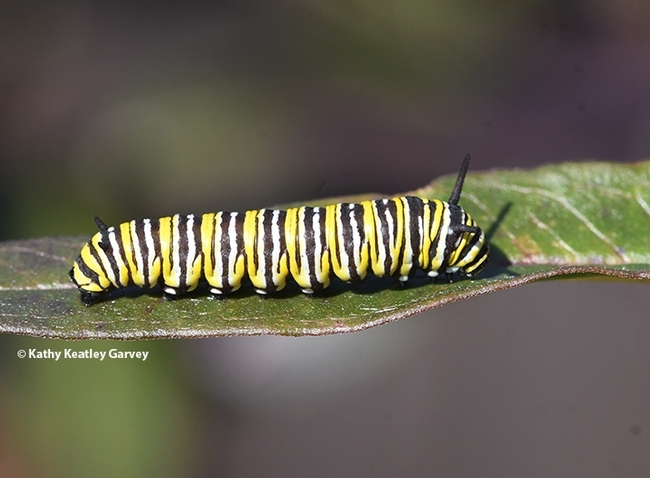David James, WSU entomologist
"The population, counted by citizen scientists at monarch overwintering locations in southern California, dropped from around 300,000 three years ago to just 1,914 in 2020, leading to an increasing fear of extinction. However, last winter large populations of monarchs were found breeding in the San Francisco and Los Angeles areas. Prior to last winter, it was unusual to find winter breeding by monarchs in those locations."
So begins a news release, "New Monarch Butterfly Breeding Pattern Inspires Hope," posted on EurekAlert by the communications specialists at Washington State University, Pullman, Wash., in citing the peer-reviewed research of WSU entomologist/associate professor David James. He's been studying monarchs for 43 years and spearheads a migratory monarch tagging program in the Pacific Northwest.
The WSU news release quotes the monarch scientist: "There's more to it than just counting overwintering butterflies. It seems that monarchs are evolving or adapting, likely to the changing climate, by changing their breeding patterns."
The impetus for the news release? James recently authored "Western North American Monarchs, Spiraling into Oblivion or Adapting to a Changing Environment?" in the journal Animal Migration. He called attention to the huge declines of monarchs--and their resiliency--in Australia when he was working on his PhD dissertation there 40 years ago.
James says that climate-wise, San Francisco is very similar to the area around Sydney. And he thinks that monarchs will adapt well to the changing climate in the western United States, just as the monarchs in the Sydney area have.
The WSU entomologist is now connecting with citizen scientists in California to collect more data on winter breeding that "can show this evolution and adaptability." His research includes data on what milkweed species the monarchs frequent. They include tropical milkweed, Asclepias curassavica, which has thrived in California for more than 100 years. Some advocate a "no grow" policy, declaring that A. curassavica impedes migration and carries more of the Ophryocystis elektroscirrha (OE) spores than the native milkweeds because it can survive the winter in many areas of California, while native milkweed species usually go dormant. Others argue that tropical milkweed is not the cause of the declining milkweed population--that habitat loss and pesticides are. "Just cut it back before the fall migration or cut it back when monarchs are no longer laying eggs" to limit the transfer of OE, they say. Still others insist on planting a variety of milkweed species, including tropical, to give monarchs a choice, that "monarchs know what they want."
A monarch caterpillar and a honey bee sharing a tropical milkweed in Vacaville, Calif. in the summer of 2020. (Photo by Kathy Keatley Garvey)
When we contacted the WSU entomologist earlier this week, he pointed out that "the milkweeds that monarchs were using during winter last year in Santa Clara County were not solely tropical. There are good numbers of Gomphocarpus physocarpus and Gomphocarpus fruticosus being used as well, although these two species are difficult to tell apart."
"I guess the saddest thing that was reported to me last winter was the aftermath of well-intentioned people following 'the rules' to cut down tropical milkweed. My co-authors would find numerous caterpillars and eggs in compost piles and stalks of cut milkweed adorned with dozens of eggs. In both situations, there would be no successful outcome for these immature monarchs. How is that better than leaving tropical milkweed to host and nurture caterpillars?"
"Sure, OE has a negative impact on monarch productivity but so do wasps and other natural enemies. The ultimate negative impact is starvation, of course, which is what happens when you remove tropical milkweed amid reproductive female monarchs."
"The other salient point that keeps coming to mind," James told us, "is that tropical milkweed was very likely the ancestral host of monarchs in the sub-tropics before they evolved their migratory behavior. They may have even evolved migratory behavior as a response to OE! The point is, though, that monarchs can survive with OE but they cant survive without food!"
The good news is that monarchs are increasing in numbers this year at the overwintering sites along coastal California. According to the
Western Monarch Count: On Oct. 16, 2021, volunteers counted than 1300 monarchs at the Pacific Grove overwintering sites, as compared to none last year. Pismo State Beach Monarch Butterfly Grove and an adjacent site tallied approximately 8,000 monarchs on Oct. 20, 2021; last year, these sites hosted less than 300.
James believes that monarchs will NOT go extinct, but "something is happening" and "we need to do more work to find out exactly what is happening."
James' concluding statement in Animal Migration: "Four decades after confirming the existence, and studying the biology of breeding and non-breeding winter monarch populations in Australia, I feel a strong sense of déjà vu. Time will tell, if western U.S. monarch populations are evolving a comparable overwintering ecology in California, but I do know one thing. The high adaptability of monarchs ensures that the monarch butterfly will persist in Western North America. The real question is: How will future populations compare to historical populations?"



